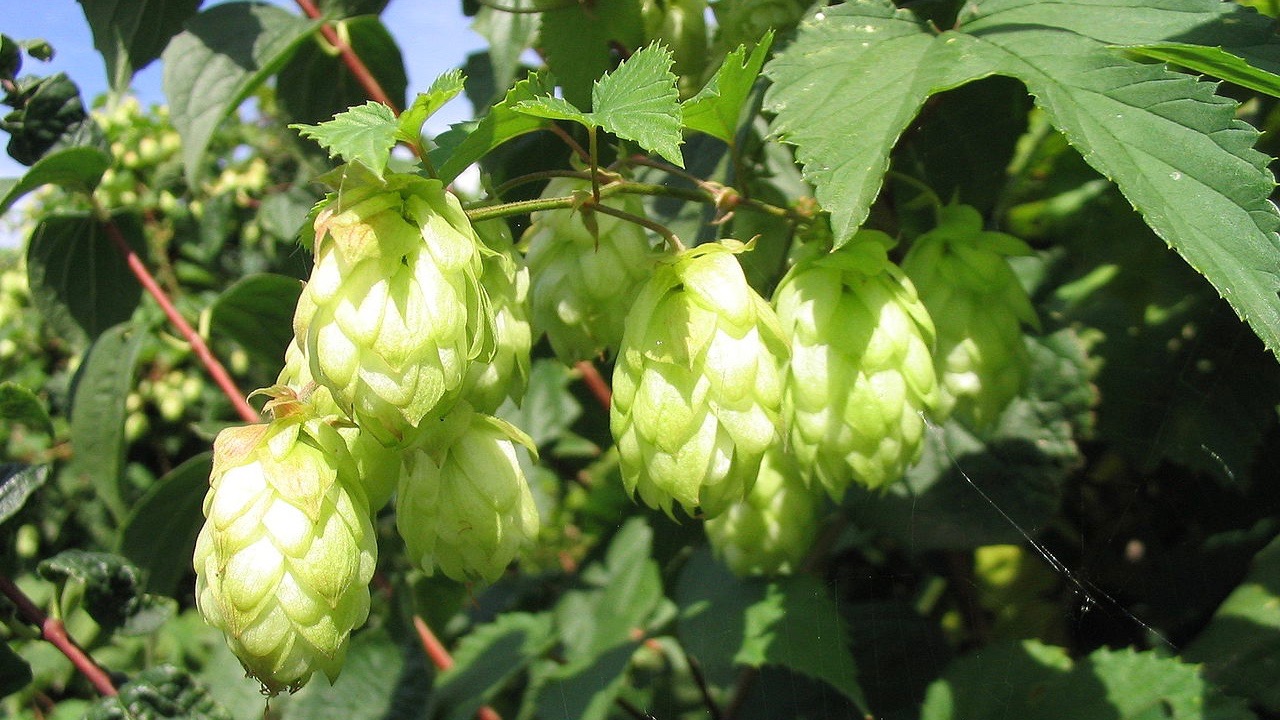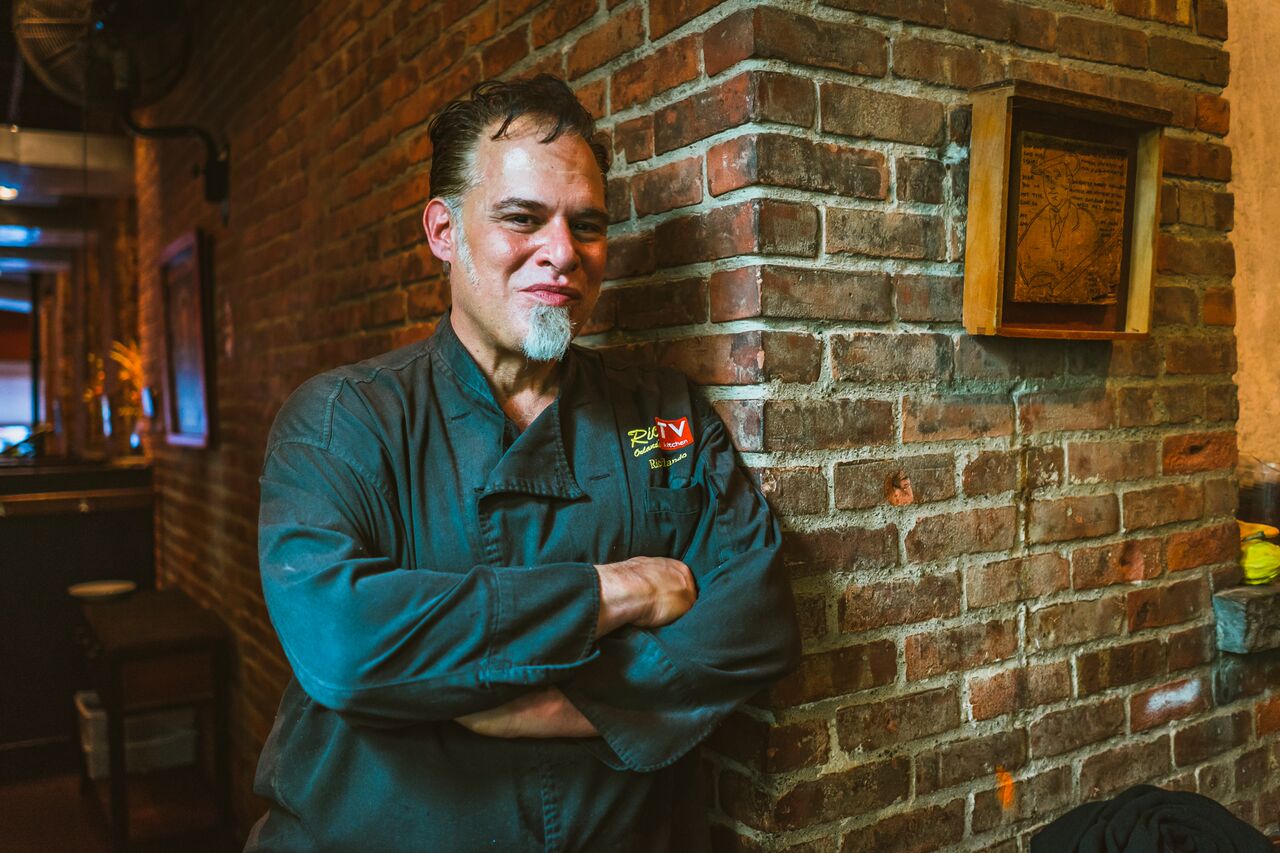This article first appeared in The Alt on March 13, 2017.
One of the storage sheds on my Montgomery County farm property sports a side room finished with lath and plaster, which usually is only found in old houses. A savvy neighbor explained that it was a hops drying room, the legacy of an industry that once dominated this and several neighboring counties, and then died out with nary a trace.
Hops were probably an ingredient in Babylonian beer, and the Romans used them as a vegetable, in which guise they arrived in Britain. But the only edible portion is the young shoot, which requires so much effort to harvest that it counts among the priciest of nibbles. The earliest written reference to hops as a beer component dates from 1079.
Hops were shipped to New World settlers until 1640, when colonists began growing their own. New York’s first romance with hops began at the beginning of the 19th century, and by the time the Erie Canal opened, the crop was fetching $1,000 per ton. By 1855, three million tons were harvested; by the end of the century, 40,000 acres of hops were being grown in the state, with a harvest of 60 million tons, some of it grown on my property and dried in my barn.
A combination of crop disasters and price-fixing built the coffin for New York hops back then, but the nails were hammered by the Volstead Act. “The brewing industry was destroyed by Prohibition,” says George di Piro. He’s the brewmaster and co-owner of Druthers. “Only the biggest brewers survived, the ones who were big enough to get away with it. After repeal, fewer breweries meant less variety. Plus, the big breweries decided they could make more money if they got women drinking, so they made a lighter beer.”
“After repeal,” says Steve Miller, “some hops acreage remained in the state, but by 2000 only a couple of people were growing it here.” Miller is a Cornell Cooperative Extension hops specialist based in Madison County. He explains that two factors helped the local industry grow. “There was the rise in appreciation of craft beers, and then there was a warehouse fire in Yakima.” That 2006 fire, in Washington state’s hops-growing center, leveled a 40,000-square-foot building, destroying about 10,000 200-pound bales, which was about four percent of total US production.
“By 2010, there were 15 acres planted in New York. Last year, we were up to 400 acres. The Farm Brewing Law has helped local growers, but others, who aren’t farm brewers, are also using New York hops. Brewers are accustomed to using Pacific Coast hops, so it’s up to the growers to make their case.”
The Farm Brewing Law went into effect at the beginning of 2013 to help increase demand for locally grown products while creating new brewing-industry businesses. To receive a New York State Farm Brewery license, the brewmaster must make beer with at least 20 percent of the hops and 20 percent of the other ingredients from local sources, a percentage that increases to 60 in 2019 and 90 in 2024. A farm brewery license also allows brewers to sell beer and cider by the glass.
“We have about 150 farm breweries across the state,” says Miller, “but that number changes every week. And there are over 300 regular breweries.”
Dietrich Gehring is the brewmaster – and general factotum – of Indian Ladder Farmstead Cidery and Brewery in Altamont, which he runs with his wife, Laura Ten Eyck, and business partner Stuart Morris. “We’re in our sixth year growing hops commercially,” says Gehring, “but we’ve been growing them for over 30 years. It started as a hobby, and then we decided to see if we could do it on a larger scale. When the Farm Brewing Law was passed, we decided to add a small brewery and cidery to our operation.”
During the business season, he has six beers and six ciders available, made from his own hops and apples. “We also grow our own barley and our own oats, so we produce more of an estate beer than other breweries,” he observes. And does he sell any of his hops? “We use it all ourselves. We might sell a little of it to dear friends.”
But there’s not as large a market as you might think. “I don’t buy New York hops,” says di Piro. “The varieties I want come from the Pacific Northwest. This is a matter of my taste and what my customers want.”
He was working as a chemist in the pharmaceutical industry when he started home brewing. “I was lucky enough to travel in Europe when I was young, and the beer I tasted there made me realize that you couldn’t find a good beer in America.” He soon decided that this beverage was his true passion, and pursued it professionally as the initial Albany Pump Station brewmaster and now as brewmaster at and co-owner of Druthers, where he’s working to combat the efflorescence of bad beer. “ To call it beer in the United States, it has to have some amount of hops, even if, like Budweiser, it’s barely noticeable.”
Gehring appreciates the challenge for New York-based growers. He and Ten Eyck co-authored The Hop Grower’s Handbook, now in its second printing, to share what they’ve learned over the years. “When we started, there wasn’t a lot of knowledge or infrastructure. We had help from the University of Vermont and Cornell Cooperative Extension, but even they were still learning about it and weren’t much more than a couple of years ahead of us.
“Some people approach this as a romantic idea, ‘I’m going to grow hops!’ They don’t appreciate the work involved. For instance, hops need to go from the vine to the dryer in less than an hour. Twenty minutes would be ideal. It’s a high-value crop, but that means it’s a high-input crop.
“We grow nine varieties, including a heritage variety we call the Helderberg Hop. Soon after I started doing this, I heard from a man named from Dan Driscoll, who wanted to know if I was be interested in having some heirloom helderberg hop rhizomes.”
Knox-based Driscoll was a home-brewing enthusiast who discovered that a retired farmer living in nearby Berne was growing hop plants that probably dated back to the early 1800. Driscoll planted some of those rhizomes in 1982 and spread the heirloom wealth with several friends.
“I took a few. I didn’t think much of it at first, but soon found out it had a unique flavor, a spicy, pineapply taste.”
Ready to start planting? “It can cost about $15,000 an acre to put in hops,” says Gehring, “and that’s not counting the harvesting and processing machinery. And once you’ve planted, it takes three years to reach maturity. It’s a perennial, though, so once it’s in, that plant can go on for 25 years. It’s more like an apple or a grape. It grows like a freakin’ weed. Once you put it in, you will get hops.”
Photo: Wikipedia Commons





